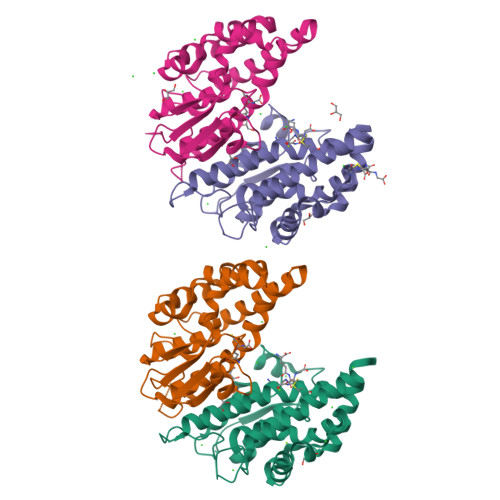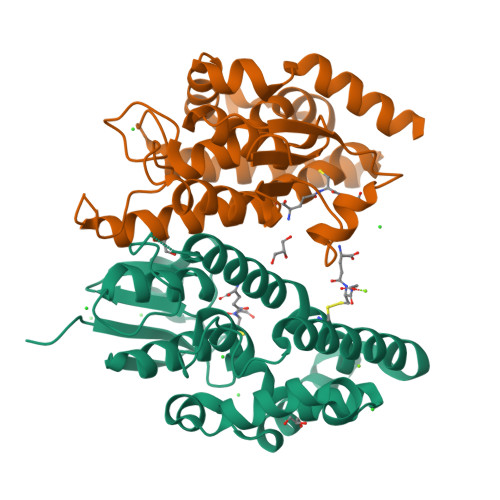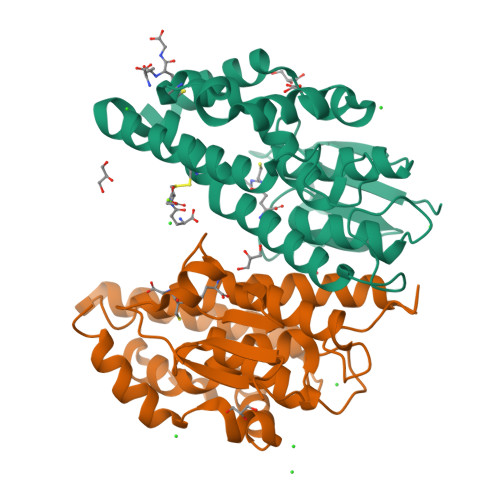Forced evolution of a herbicide detoxifying glutathione transferase.
Dixon, D.P., McEwen, A.G., Lapthorn, A.J., Edwards, R.(2003) J Biological Chem 278: 23930-23935
- PubMed: 12692133
- DOI: https://doi.org/10.1074/jbc.M303620200
- Primary Citation of Related Structures:
1OYJ - PubMed Abstract:
Plant Tau class glutathione transferases (GSTUs) detoxify diphenylether herbicides such as fluorodifen, determining their selectivity in crops and weeds. Using reconstructive PCR, a series of mutant GSTUs were generated from in vitro recombination and mutagenesis of the maize sequences ZmGSTU1 and ZmGSTU2 (with the prefix Zm designating Zea mays L.). A screen of 5000 mutant GSTUs identified seven enzymes with enhanced fluorodifen detoxifying activity. The best performing enhanced fluorodifen detoxifying mutant (EFD) had activity 19-fold higher than the parent enzymes, with a single point mutation conferring this enhancement. Further mutagenesis of this residue generated an EFD with a 29-fold higher catalytic efficiency toward fluorodifen as compared with the parents but with unaltered catalysis toward other substrates. When expressed in Arabidopsis thaliana, the optimized EFD, but not the parent enzymes, conferred enhanced tolerance to fluorodifen. Molecular modeling predicts that the serendipitous mutation giving the improvement in detoxification is due to the removal of an unfavorable interaction together with the introduction of a favorable change in conformation of residues 107-119, which contribute to herbicide binding.
Organizational Affiliation:
Crop Protection Group, School of Biological and Biomedical Sciences, University of Durham, South Road, Durham DH1 3LE, United Kingdom.





















